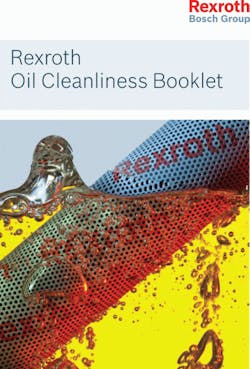The new Rexroth Oil Cleanliness Booklet, available for free download, explains the basics of contamination control and serves as a reference and information tool for users of hydraulic system.
As it indicates, more than 3⁄4 of all fluid system problems can be traced back to contaminated oil, making oil oil monitoring the most important action to take to prevent system failure.
Different types of inspection are reviewed. The most common sources of contamination are explained, including solid particles, liquid, gases, built-in, ingressed, and self-generated. It also notes consequences of these sources.
Suggestions also are given to achieve oil cleanliness in accordance with ISO 4406.
Additional concepts highlighted include:
Overview of key filter properties covers filtration grade, dirt absorption capacity and differential pressure
Fitting tolerance of hydraulic components includes gear pumps, vane pumps, piston pumps, servo valves and control valves
Recommended oil cleanliness level examines requirements in accordance with ISO 4406 for different application types and suggests filter material/filtration grades.
The 44-page, pocket-sized booklet is printed on oil-resistant paper so users can keep it on hand at all times. It recommends ongoing monitoring and maintenance strategies to proactively diagnose and solve problems before they result in system failure.
More than a dozen Rexroth products, including filters, monitors, and testing equipment, are introduced that can help ensure system uptime by preventing negative incidents and diagnosing potential issues before they become problems.
Visit www.boschrexroth-us.com/filter to order a free copy of the booklet.


